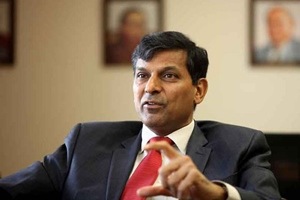In RBI’s monetary policy review for June 2016, Raghuram Rajan kept repo rate unchanged at 6.5% on expected lines citing rising inflationary pressures, and global risks as the key reasons for taking the decision.
“In its bi-monthly monetary policy statement of April 2016, the Reserve Bank stated that it would watch macroeconomic and financial developments in the months ahead with a view to responding as space opens up. Given the uncertainties, the Reserve Bank will stay on hold, but the stance of monetary policy remains accommodative. The Reserve Bank will monitor macroeconomic and financial developments for any further scope for policy action,” Rajan said in his policy statement.
What stopped Rajan from cutting key rates in the credit policy review? We take a look:
1) Inflation: Incoming data show a sharper-than-anticipated upsurge in inflationary pressures emanating from a number of food items (beyond seasonal effects), as well as a reversal in commodity prices, Rajan says. “A strong monsoon, continued astute food management, as well as steady expansion in supply capacity, especially in services, could help offset these upward pressures,” he feels, but adds, “The inflation surprise in the April reading makes the future trajectory of inflation somewhat more uncertain.”
Also read: RBI monetary policy: Rajan’s headache – your EMIs are not coming down
Explaining further, Rajan says, “The expectations of a normal monsoon and a reasonable spatial and temporal distribution of rainfall, along with various supply management measures and the introduction of the electronic national agriculture market (e-NAM) trading portal, should moderate unanticipated flares of food inflation. In addition, capacity utilisation indicators suggest that the available headroom in industry could keep output prices subdued even as demand picks up. Nonetheless, there are upside risks – firming international commodity prices, particularly of crude oil; the implementation of the 7th Central Pay Commission awards which will have to be factored into projections as soon as clarity on implementation emerges; the upturn in inflation expectations of households and of corporates; and the stickiness in inflation excluding food and fuel.”
“Taking these factors into account, the inflation projections given in the April policy statement are retained, though with an upside bias. Considerable uncertainty surrounds these projections, which should be clarified by incoming data in the next few months,” he adds.
Also read: LIVE RBI monetary policy review: Rajan keeps repo rate unchanged
2) Business confidence: Domestic conditions for growth are improving gradually, mainly driven by consumption demand, which is expected to strengthen with a normal monsoon and the implementation of the Seventh Pay Commission award, RBI observes. “Higher public sector capital expenditure, led by roads and railways, should crowd in private investment, offsetting somewhat the subdued appetite for fresh private investment due to financial stress. Yet, business confidence will be restrained to an extent on account of unrelenting global factors,” Rajan warns. “On a reassessment of balance of risks, therefore, the GVA growth projection for 2016-17 has been retained at 7.6 per cent with risks evenly balanced,” he adds.
3) Transmission of earlier rate cuts: According to Rajan more monetary transmission to support the revival of growth continues to be critical. The government’s reform measures on small savings rates combined with the Reserve Bank’s refinements in the liquidity management framework should help the transmission of past policy rate reductions into lending rates of banks, he says. “The Reserve Bank will shortly review the implementation of the Marginal Cost Lending Rate framework by banks. Timely capital infusions into constrained public sector banks will also aid credit flow,” he concludes.
DON’T MISS THIS! RBI credit policy June 2016: Full coverage
